What is Kitsune Udon?
Kitsune udon (きつねうどん) is a popular Japanese noodle soup dish made with thick, chewy udon noodles served in a savory dashi broth, topped with seasoned aburaage (fried tofu pouch).
Although the fried tofu used in kitsune udon varies from region to region, it is typically boiled in hot water to remove its excess oil and then seasoned with sugar, soy sauce, and mirin. Kitsune-style tofu can be served hot, cold, or even in hot pots.
The history of kitsune udon is unclear, with some theories suggesting it dates back to the Edo period (1600-1868) and others suggesting it emerged during the Meiji period (1868-1912).
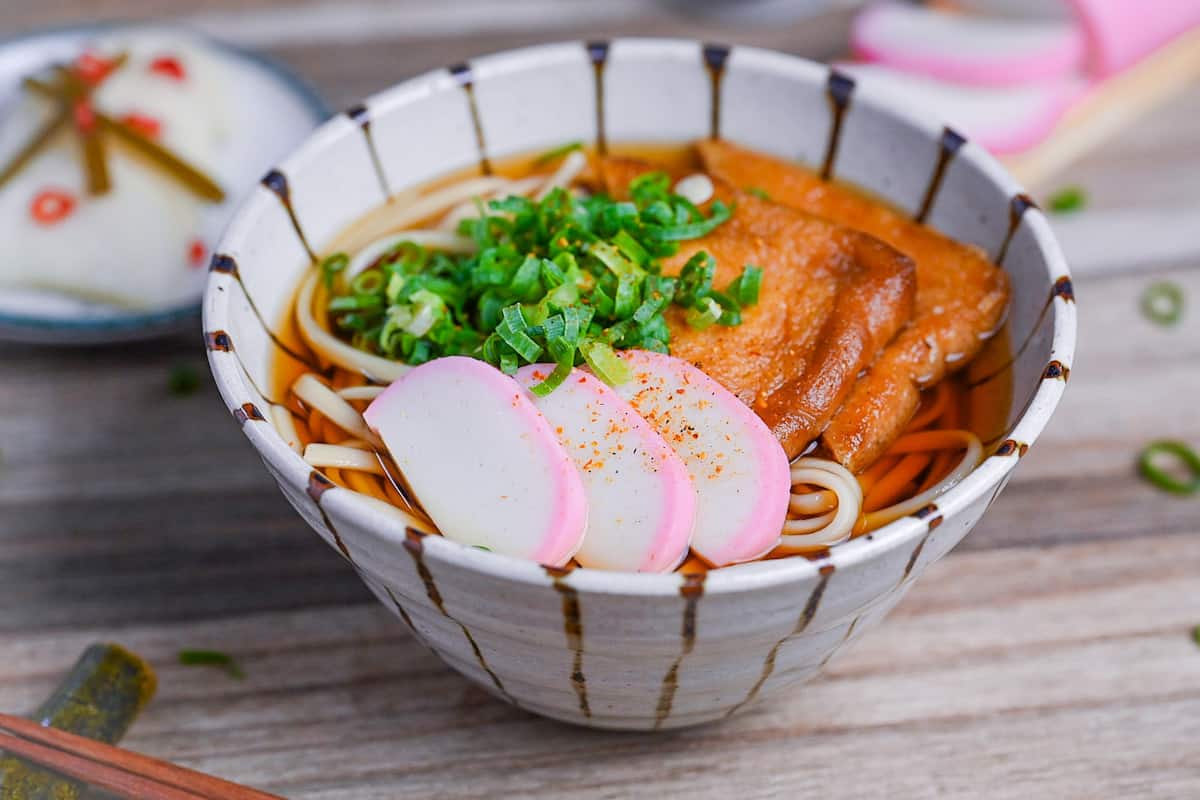
Interestingly, the word “kitsune” means fox in Japanese, and there are several theories about the origin of the name. In Japanese folklore, foxes are said to enjoy twice-fried tofu, and the color and shape of the aburaage resemble that of a fox.
Despite its simplicity, kitsune udon remains a favorite comfort food in Japan and is available at udon restaurants and as an instant dish.
The most well-known brands of instant kitsune udon are Maruchan’s Akai Kitsune and Nissin Donbei Kitsune Udon, which can be found in most supermarkets and convenience stores in Japan.
Ingredients & Substitution Ideas
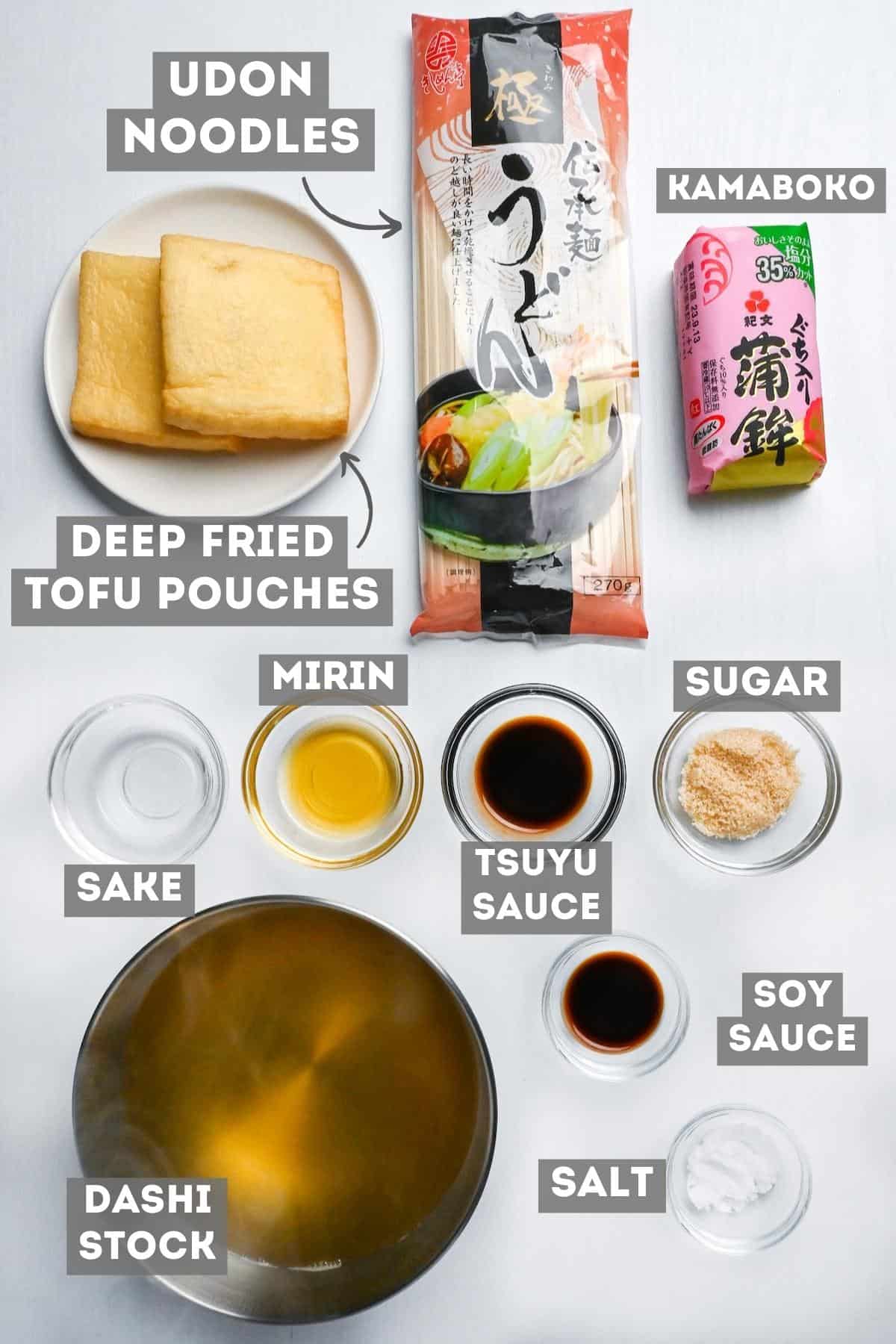
- Udon noodles: These thick, chewy wheat noodles are integral to the dish. Depending on availability in your area, you can use frozen, pre-boiled, or dried udon.
- Dashi stock: Choose from a variety of dashi options, with dashi packets and instant granules being convenient choices. For those interested in a homemade version, consider my favorite dashi, the simple awase dashi, or even vegan dashi recipes.
- Fried tofu pouch (aburaage): A must-have for kitsune udon, aburaage consists of thinly sliced tofu that’s been deep-fried.
- Sugar: While regular sugar works, I’ve recently favored light brown cane sugar for its rich flavor.
- Sake: If unavailable, white wine or dry sherry can be used as a substitute.
- Mirin: When shopping for mirin, opt for “hon mirin” (本みりん) to ensure the best taste.
- Tsuyu sauce: If you don’t have tsuyu sauce, a mix of soy sauce and extra sugar will suffice. For a homemade version, check out the tsuyu sauce recipe.
- Soy sauce: For a comprehensive guide on selecting the right soy sauce, refer to our complete soy sauce guide.
- Toppings: Enhance your udon with toppings like chopped green onions, shichimi pepper, and Japanese fishcakes (kamaboko).
Use a plant-based dashi and tsuyu sauce, and omit the fishcakes to make this dish suitable for vegetarians and vegans!
Jump to Full Recipe Measurements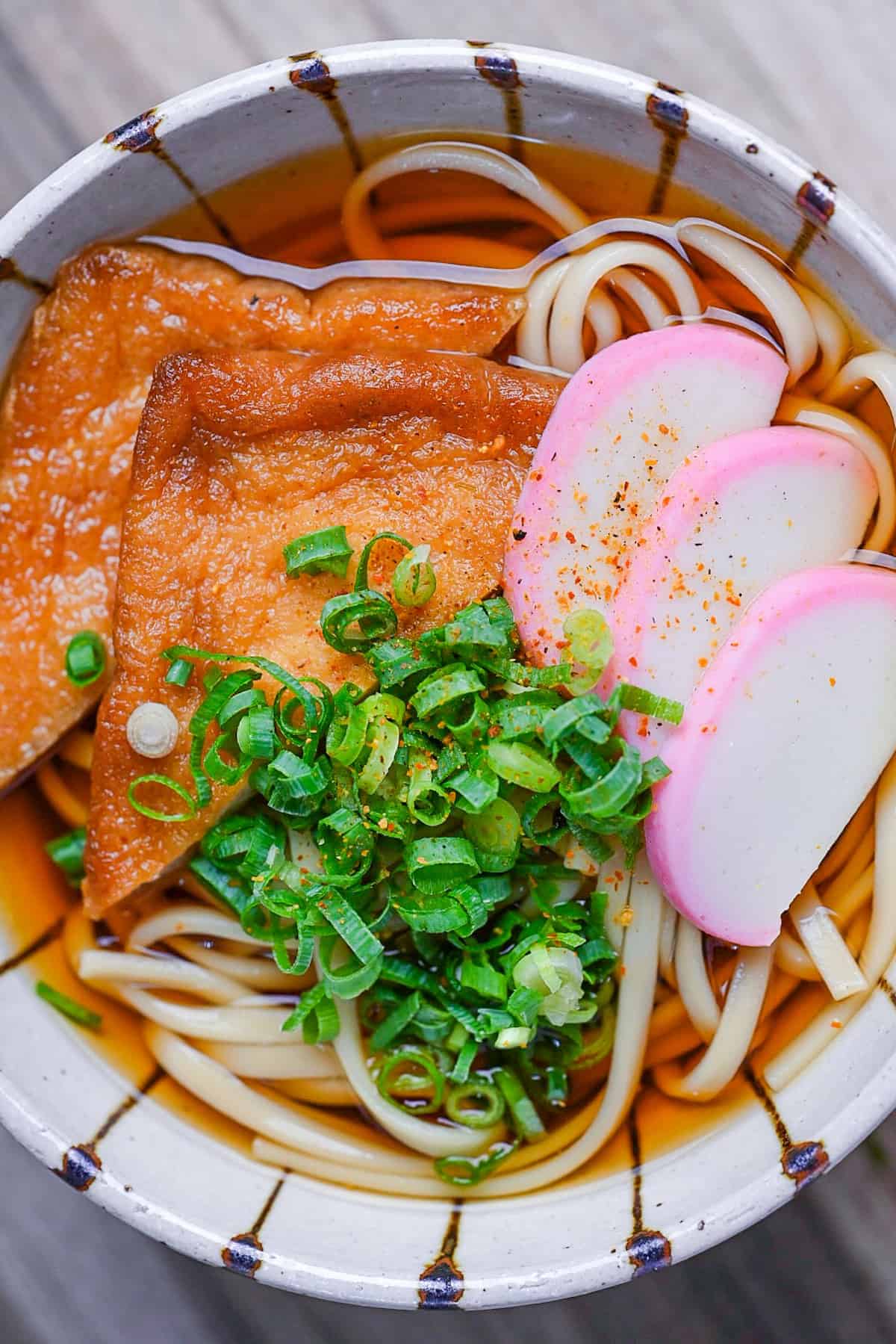
Visual Walkthrough & Tips
Here are my step-by-step instructions for how to make Japanese Kitsune Udon at home. For ingredient quantities and simplified instructions, scroll down for the Printable Recipe Card below.
Since aburaage is an ingredient that has been deep fried, it can be quite oily. To prevent the oil from seeping into the noodle broth, it should be boiled in water to help remove the excess. This step not only removes the extra oil but also makes the aburaage softer and helps the sauce absorb better.
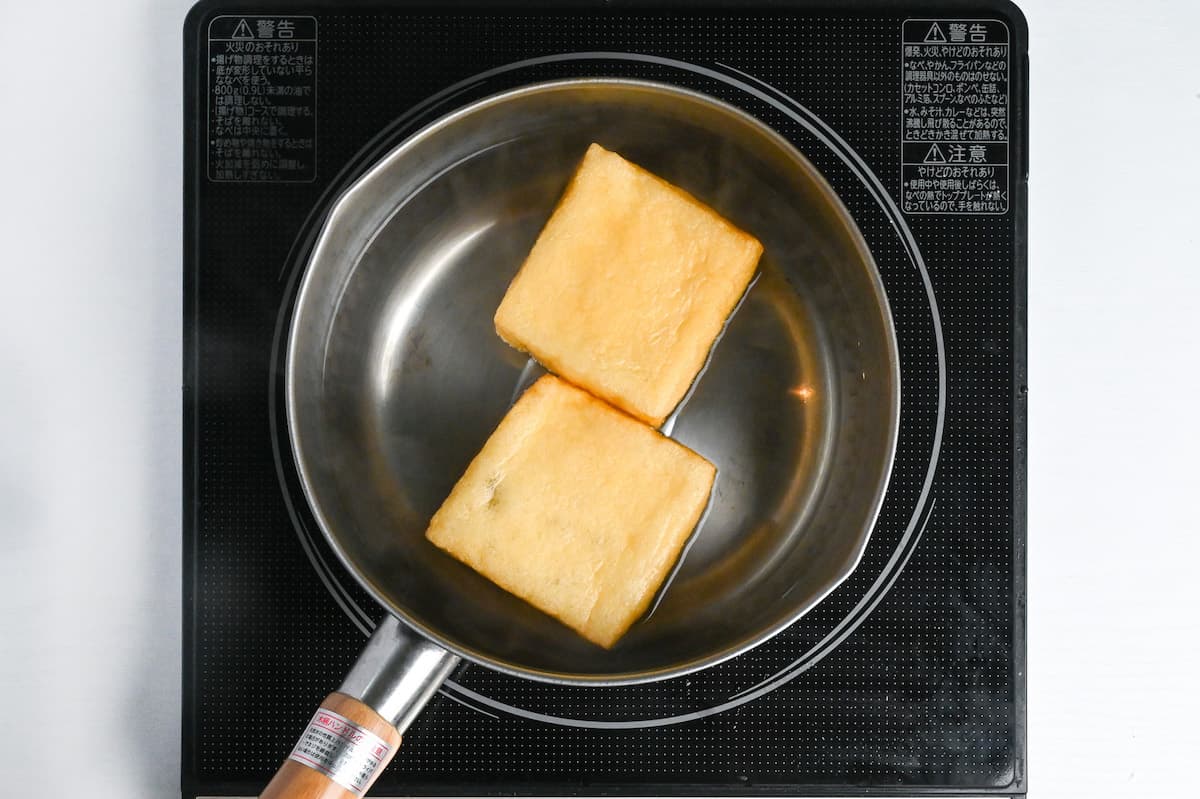
Simply bring a pot of water to a boil, then add salt and the aburaage. The salt also helps remove the oil and will be washed off later.
Fried tofu pouches are light and tend to float, so I recommend placing a drop lid on top to submerge them. You can buy drop lids made from wood, stainless steal and silicone on Amazon (affiliate links), or you can make one yourself with my homemade otoshibua tutorial.
If you don’t have a drop lid, you can push the aburaage down with cooking chopsticks or long tongs; just be careful of the steam and cover your arms and hands to prevent burns.

Boil for 3 minutes and then remove from the heat.
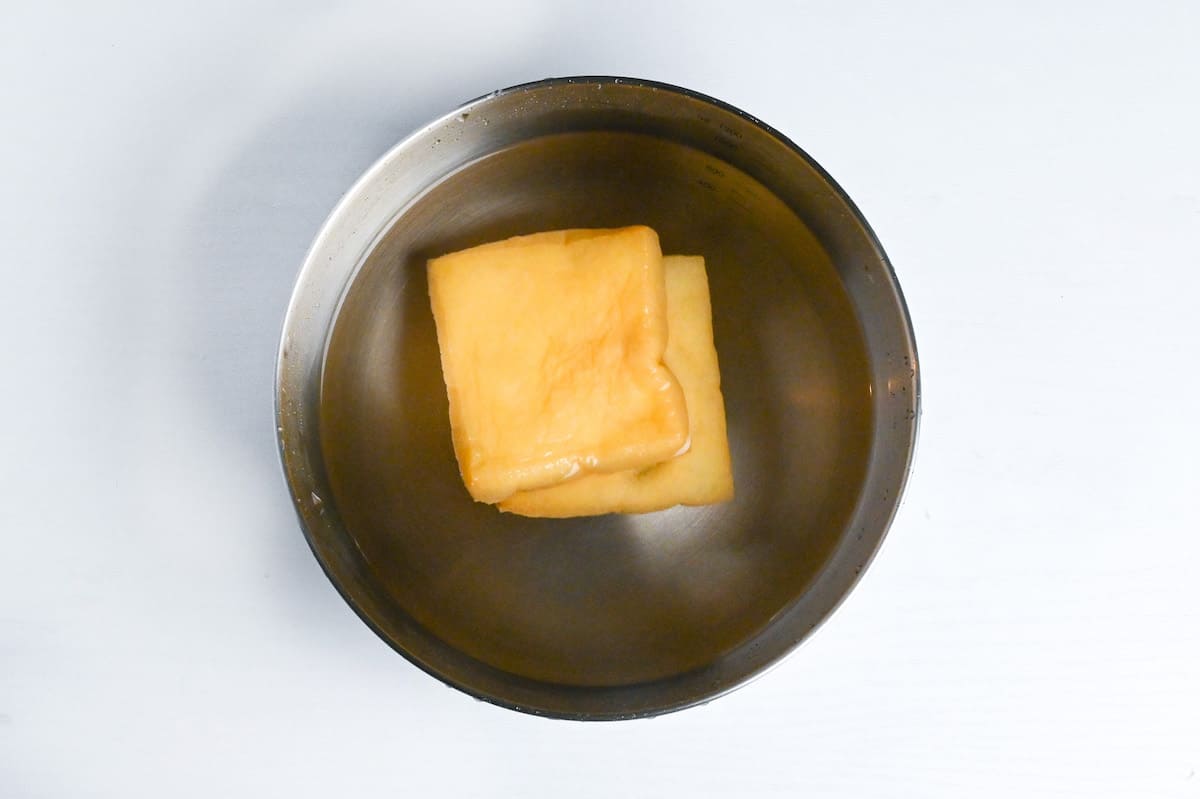
Remove the aburaage from the pot and place it in cold water to cool it quickly.
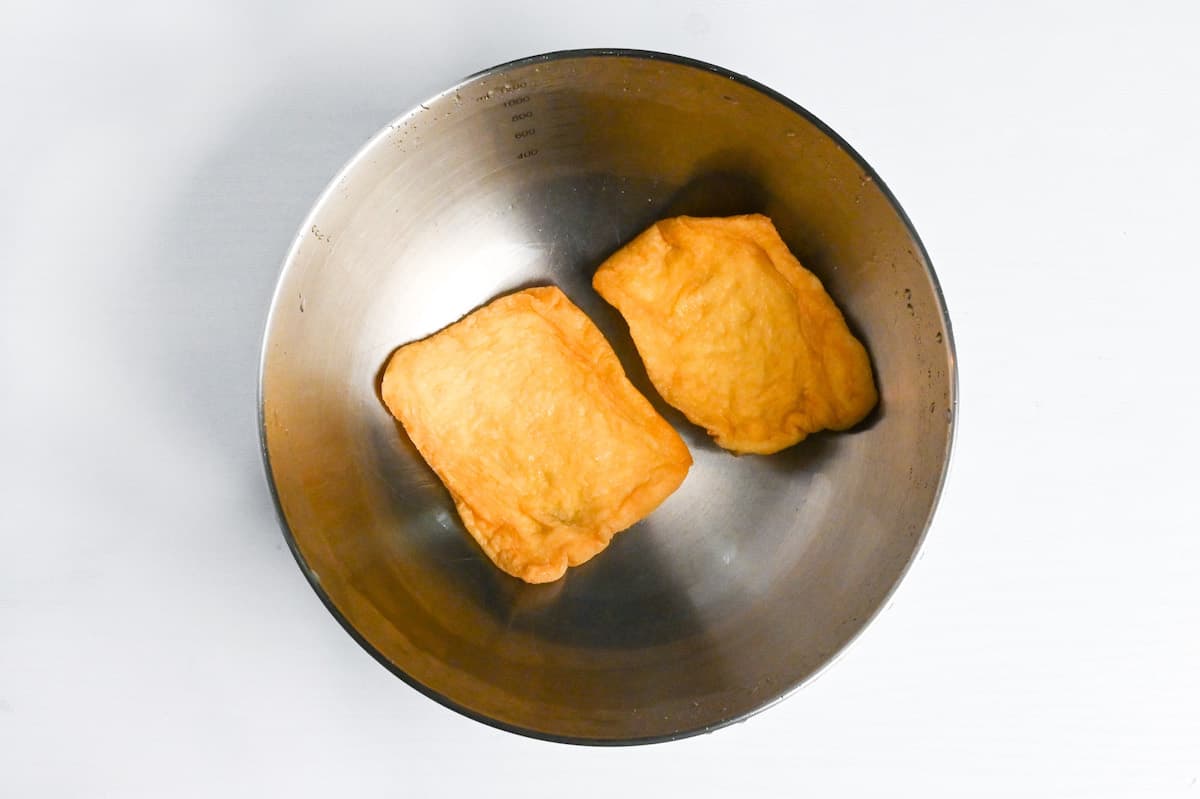
Drain and then squeeze the abuurage to remove any excess water.
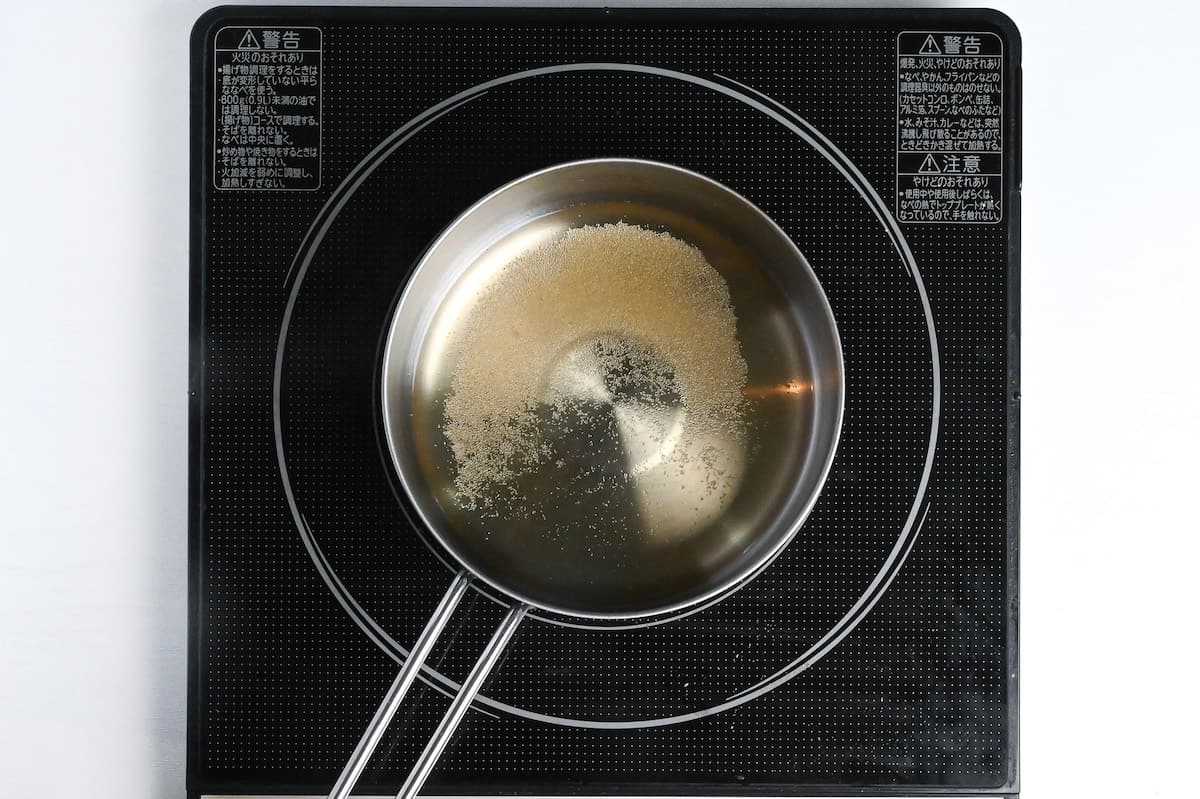
Add water, sugar, sake, and mirin to a saucepan and mix well over medium heat.
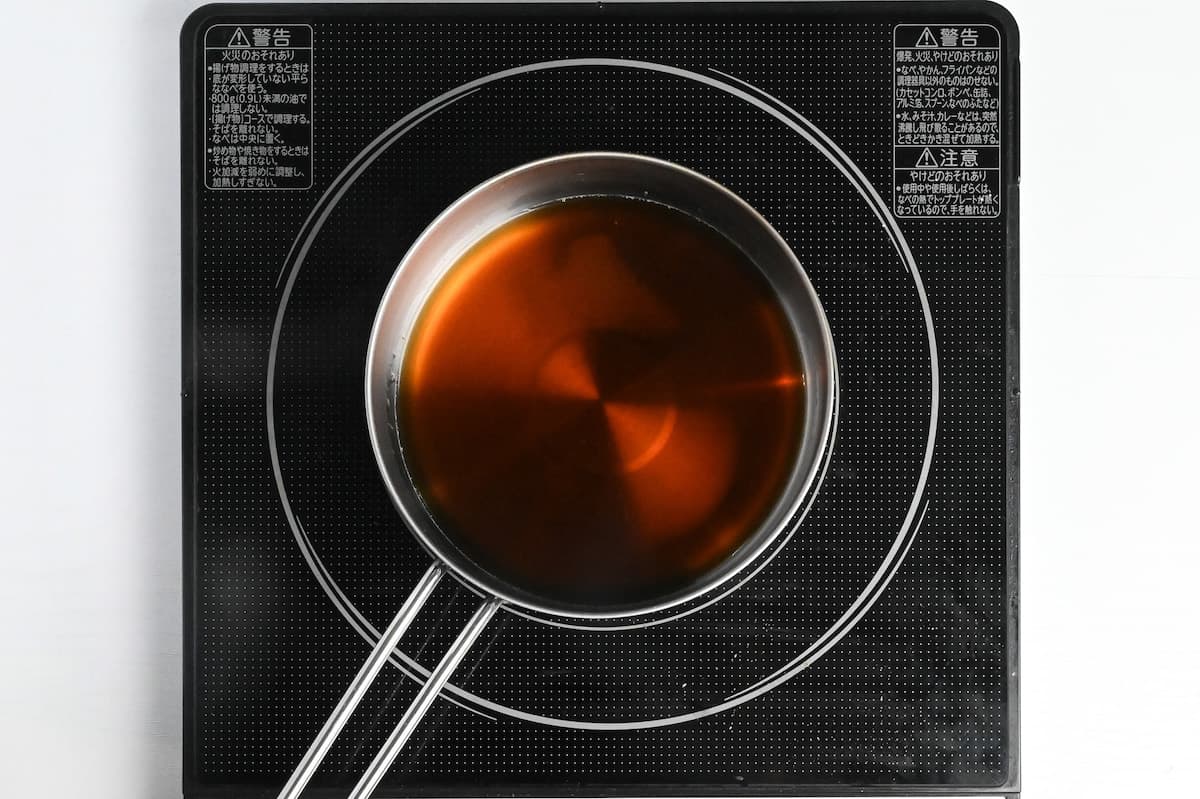
Once the sugar has dissolved, add tsuyu sauce and soy sauce. Bring the liquid to almost boiling point and then lower it to a simmer.
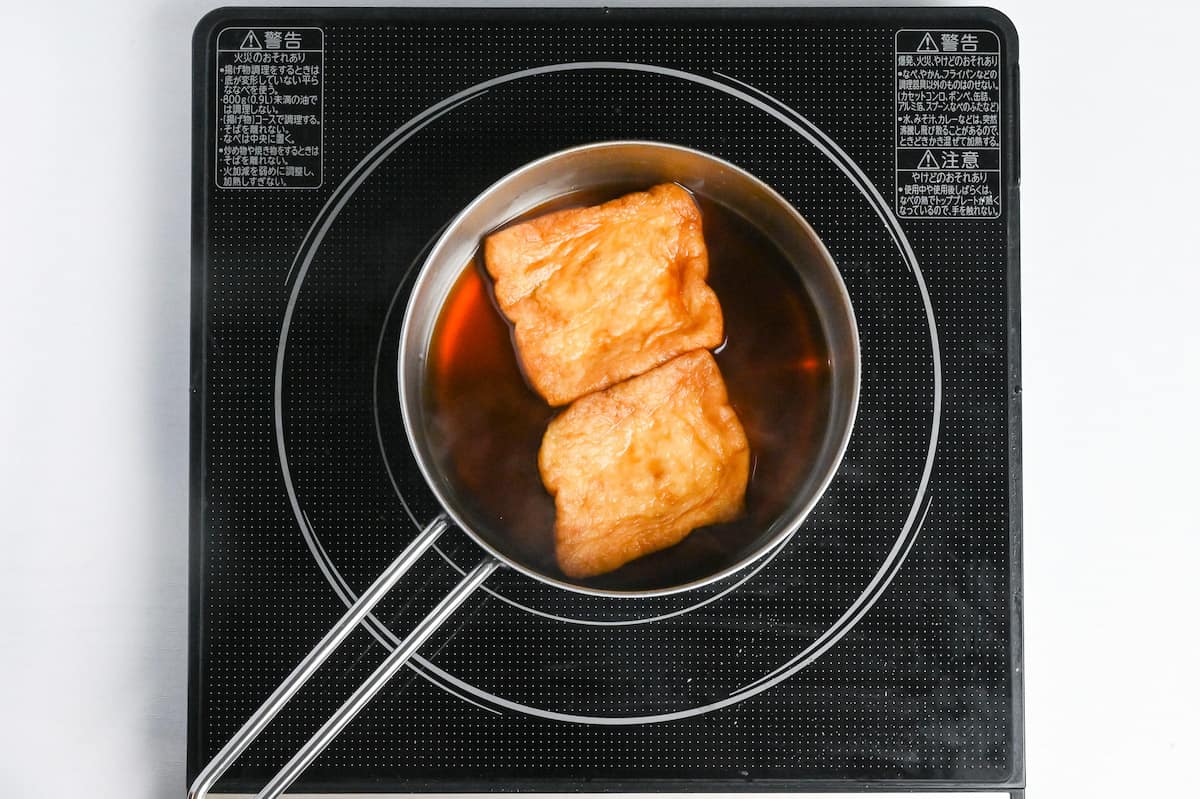
Add the aburaage and place a drop lid on top.
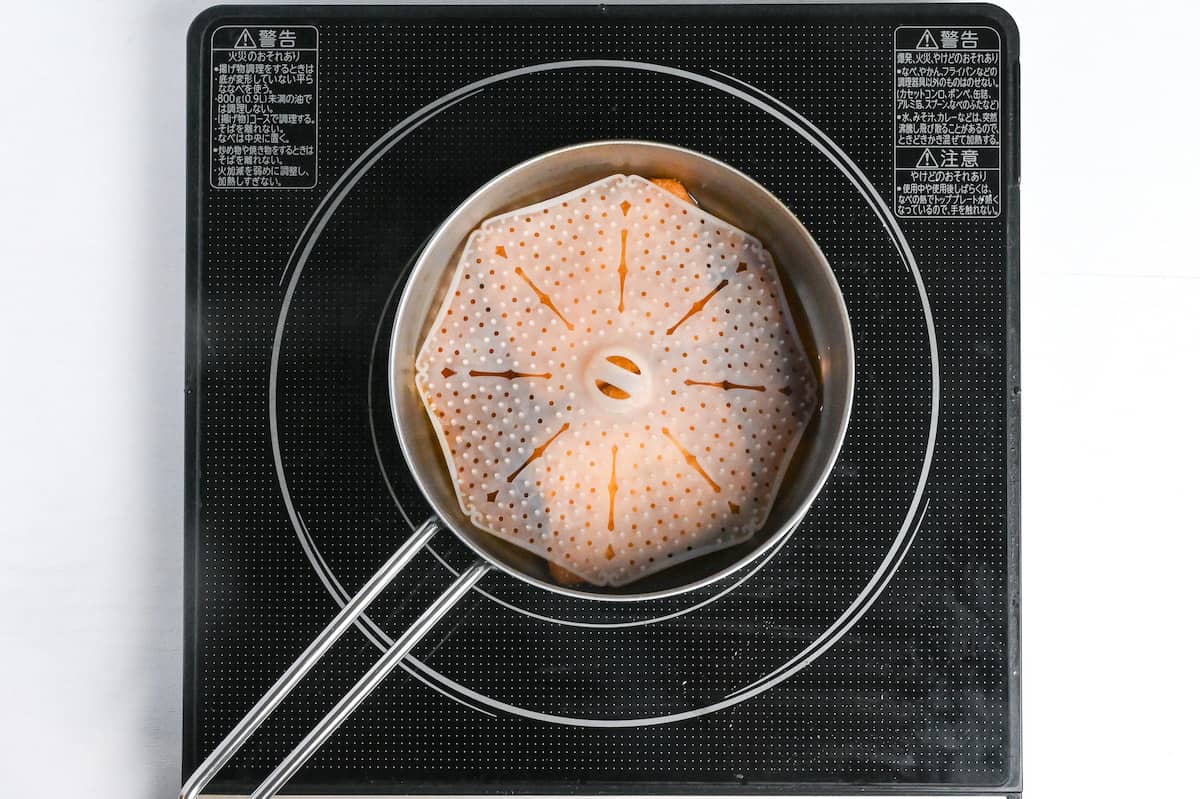
Simmer for 15 minutes or until the liquid is reduced by one-third.
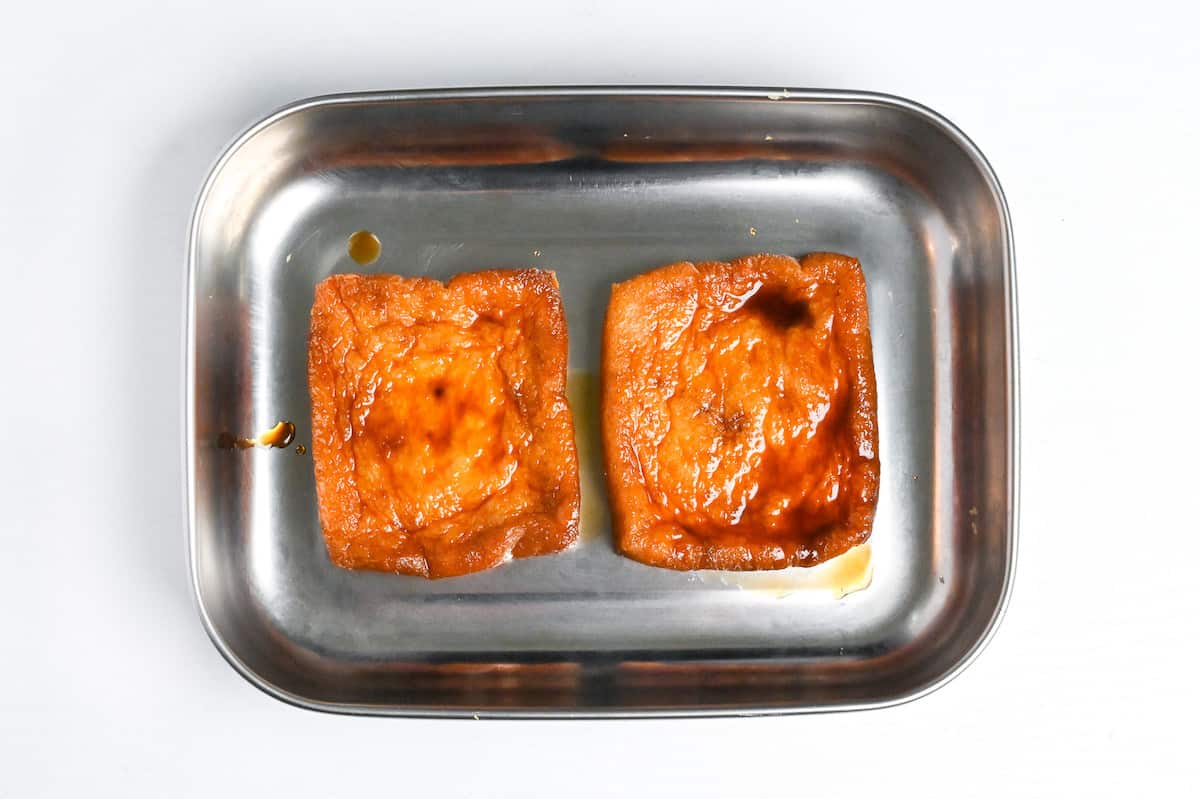
Transfer the seasoned aburaage to a heatproof container and leave them to cool. Once cool to the touch, cover, and transfer to the fridge until serving.
It’s not essential, but resting the kitsune aburaage in the fridge after it’s been cooked in the sauce will greatly improve the flavor! If you have enough time, I definitely recommend putting them in the fridge for a few hours or even overnight.
Start cooking your udon noodles according to the instructions on the packaging. While you wait, prepare the broth.
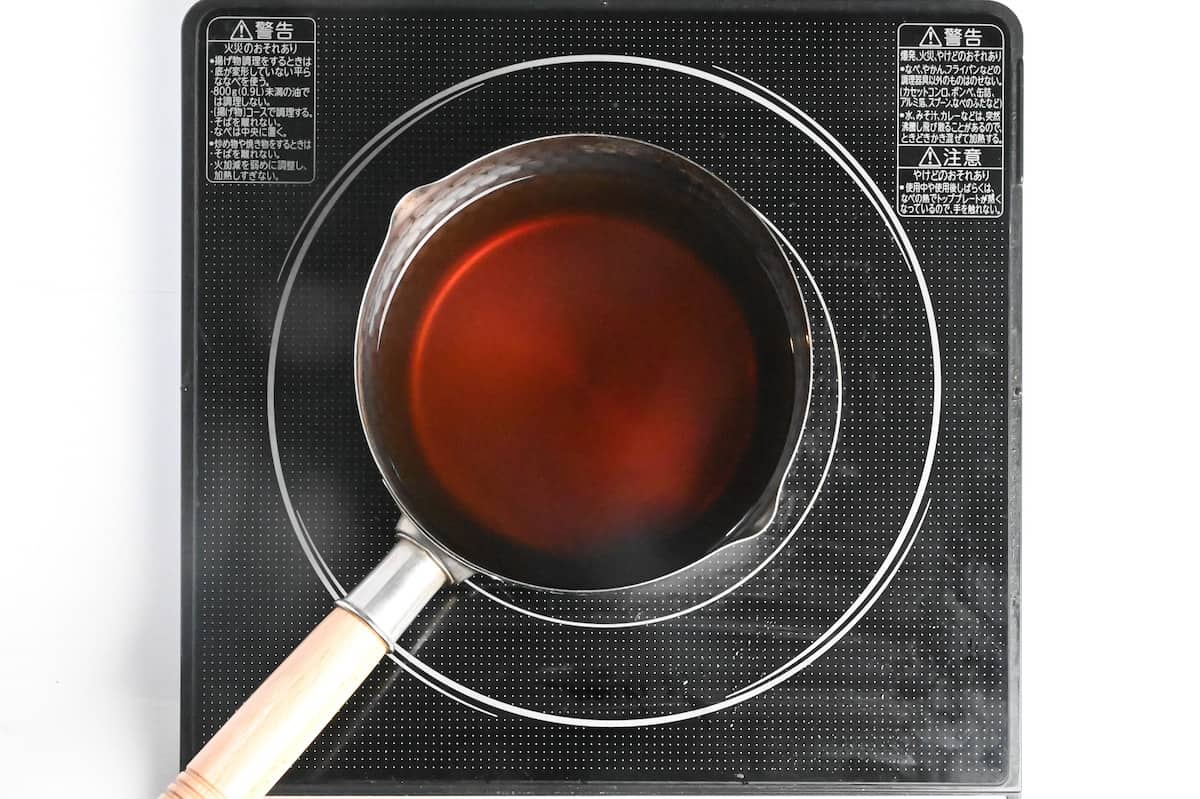
Add dashi, soy sauce, and mirin to a saucepan and heat on high. Boil for 1-2 minutes and turn off the heat. Add salt and mix well.
Once the noodles are cooked, pour them into a colander and rinse with hot water to remove the excess starch.
Divide the noodles and broth into serving bowls and top with your seasoned kitsune aburaage, a few slices of kamaboko fish cakes, and chopped green onion.
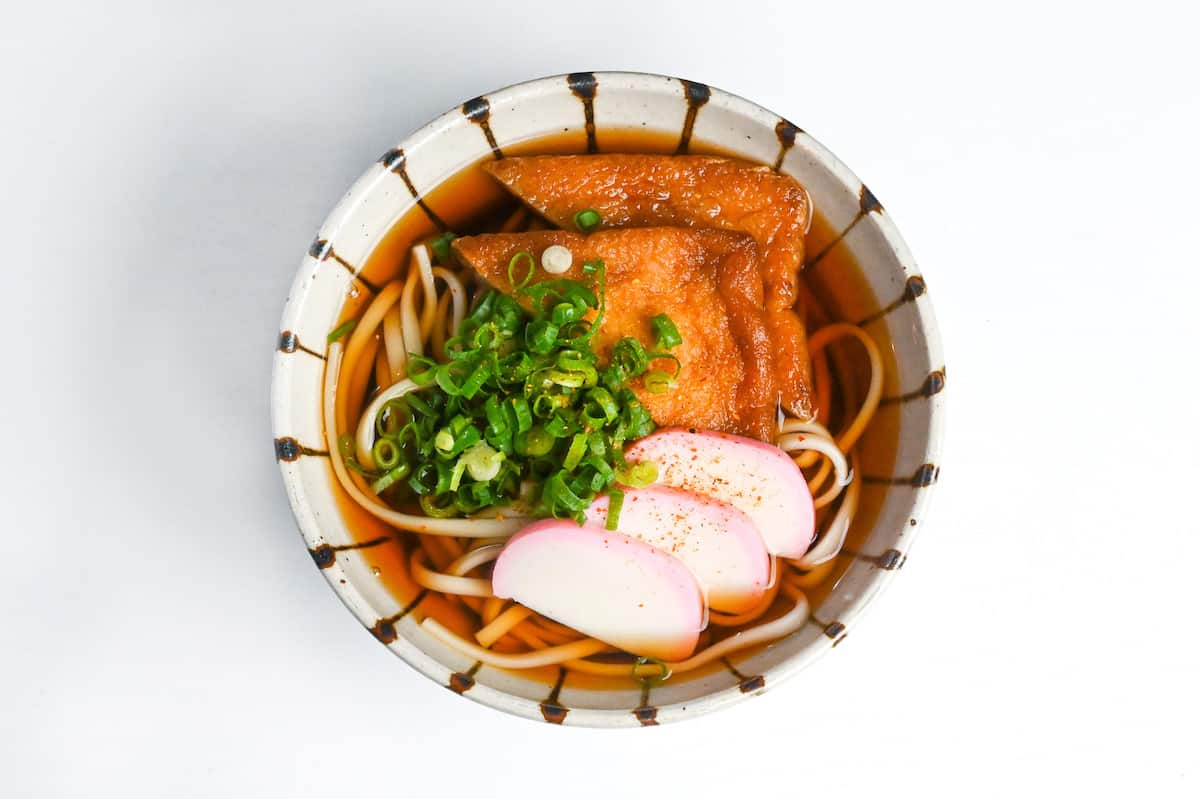
Enjoy!
Jump to Full Recipe Measurements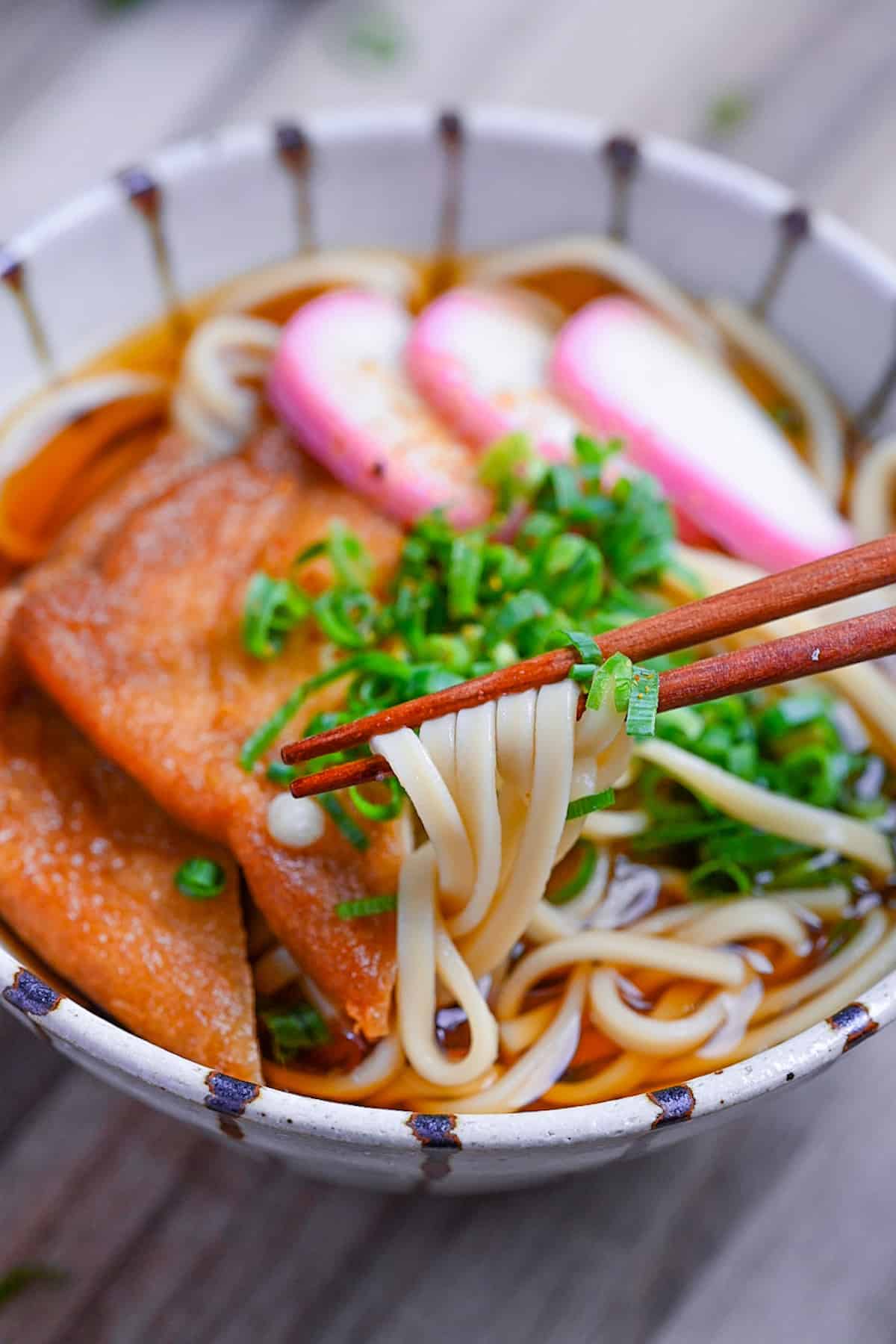
How to Store
The soup and kitsune (deep-fried tofu) can be prepared and stored separately. Refrigerated kitsune can last for 2 to 3 days, while frozen ones can last for up to 3 weeks.
Udon soup should be refrigerated in a sealed container for up to 3 days or frozen for 2 weeks. I recommend dividing the soup into portions for convenience.
Storage summary
Room temperature – Not recommended.
Refrigerated – Seasoned tofu pouch, 2-3 days. Udon soup, 3 days.
Frozen – Seasoned tofu pouch, 3 weeks. Udon soup, 2 weeks.
FAQ
There are several theories, but the most popular ones are:
• Aburaage (deep-fried tofu) is a fox’s favorite food in Japanese folklore.
• Aburaage is the color of a fox.
• Aburaage is a similar shape to a fox.
It is true that the Japanese word “kitsune” means fox, but it is not a dish made with fox meat or anything like that, it’s actually made with seasoned deep-fried tofu.
Overall, kitsune udon has a well-balanced flavor, with a perfect combination of sweet, rich fried tofu and a refreshing, simple udon broth.
Because most dashi broth contains fish elements, it’s not suitable for vegetarians. It usually has kamaboko or narutomaki, which are Japanese fishcakes. However, they can easily be made vegetarian-friendly by replacing them with vegetarian/vegan ingredients.
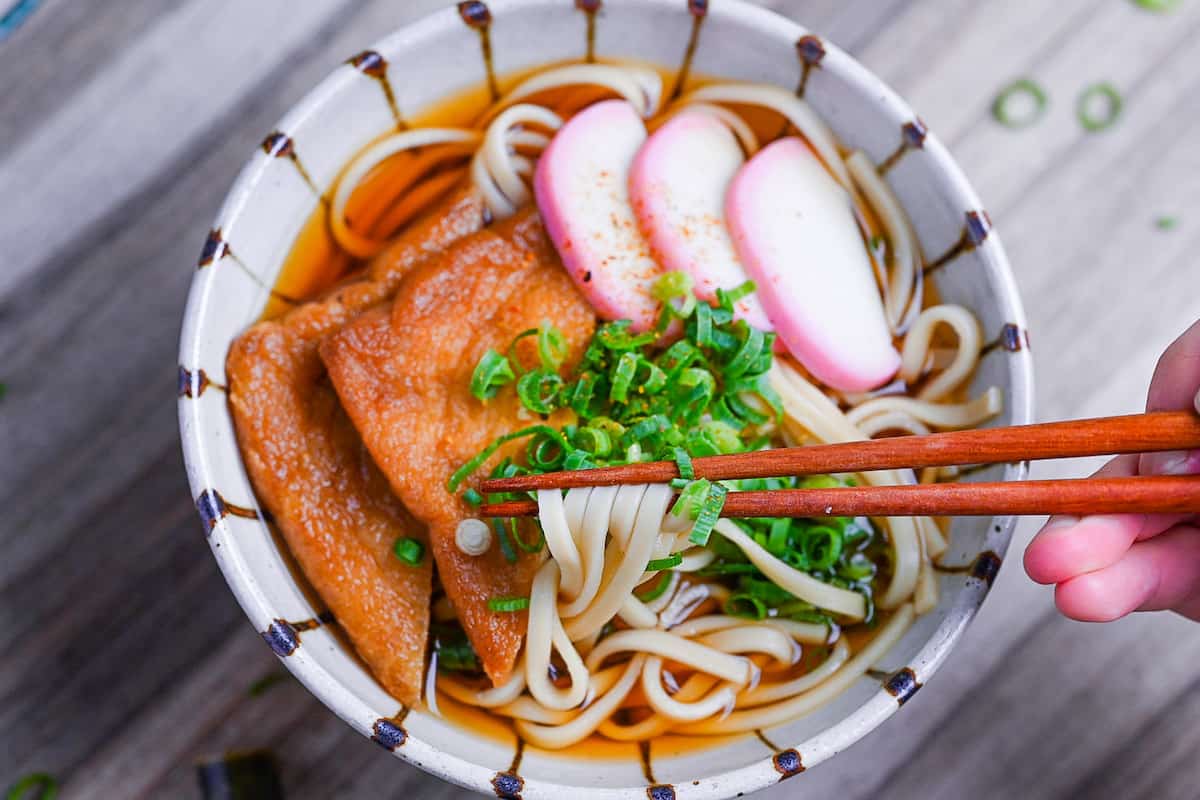
I hope you enjoy this Japanese Kitsune Udon recipe! If you try it out, I’d really appreciate it if you could spare a moment to let me know what you thought by giving a review and star rating in the comments below. It’s also helpful to share any adjustments you made to the recipe with our other readers. Thank you!
More Japanese Udon Recipes
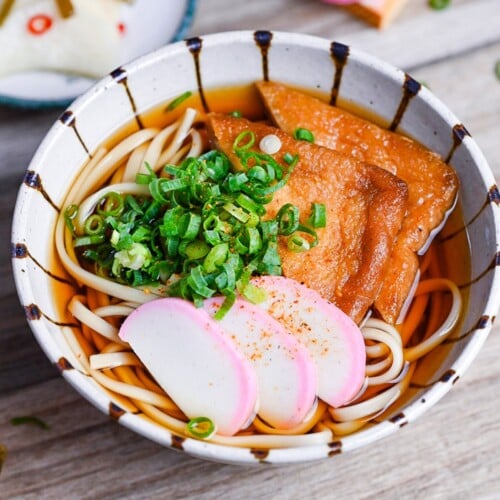
Kitsune Udon (Udon Noodles with Deep Fried Tofu)
Ingredients
Kitsune
- 2 pieces fried tofu pouch (aburaage) (aburaage)
- ½ tsp salt
- 100 ml water
- 2 tbsp sugar
- 1 tbsp sake
- 2 tbsp mirin
- 2 tbsp tsuyu sauce (noodle soup base) use kombu base for plant-based diets
- 1 tbsp Japanese soy sauce (koikuchi shoyu)
Udon soup
- 500 ml dashi stock use kombu/shiitake dashi for plant-based diets
- 2 tbsp Japanese soy sauce (koikuchi shoyu)
- 1 tbsp mirin
- ¼ tsp salt
Other elements
- 2 portions udon noodles
- finely chopped green onions 1 tbsp each for each portion
- 6 slices kamaboko fish cake (kamaboko) omit for plant-based diets
Instructions
Making the kitsune aburaage
- Fill a pot with enough water to submerge the aburaage and bring it to a boil. Add ½ tsp salt and 2 pieces fried tofu pouch (aburaage) to the pot.

- Place a drop lid on top to help keep them submerged and boil for 3 minutes.

- Remove the aburaage from the pot and wash them in cold water.

- Squeeze out the excess liquid.

- Take another pan and add 100 ml water, 2 tbsp sugar, 1 tbsp sake, 2 tbsp mirin and mix. Heat on medium.

- Once the sugar is dissolved, add 2 tbsp tsuyu sauce (noodle soup base) and 1 tbsp Japanese soy sauce (koikuchi shoyu).

- Bring the liquid to almost boiling, then turn the heat down to simmer and add the aburaage.

- Place the drop lid on the top and simmer for 15 minutes or until the liquid is reduced by one third.

- Place the aburaage into a container and leave them to cool. Once cooled, place in the fridge for at least a few hours, preferably overnight.

Noodles and Broth
- Boil 2 portions udon noodles according to the instructions on the packaging. Once cooked, drain and rinse with hot water to remove excess starch.

- Pour 500 ml dashi stock into the pan and add 2 tbsp Japanese soy sauce (koikuchi shoyu), 1 tbsp mirin and turn the heat on high. Boil for 1-2 minutes, turn off the heat and add ¼ tsp salt.

- Cut the seasoned tofu pouches into triangles by cutting in half diagonally.

- Divide the udon into serving bowls, pour the broth over the top and garnish with the seasoned tofu pouches, kamaboko fish cakes and chopped green onion.

- Enjoy!
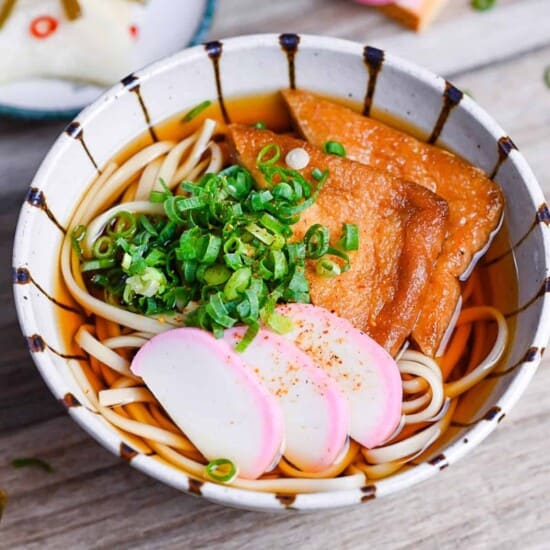


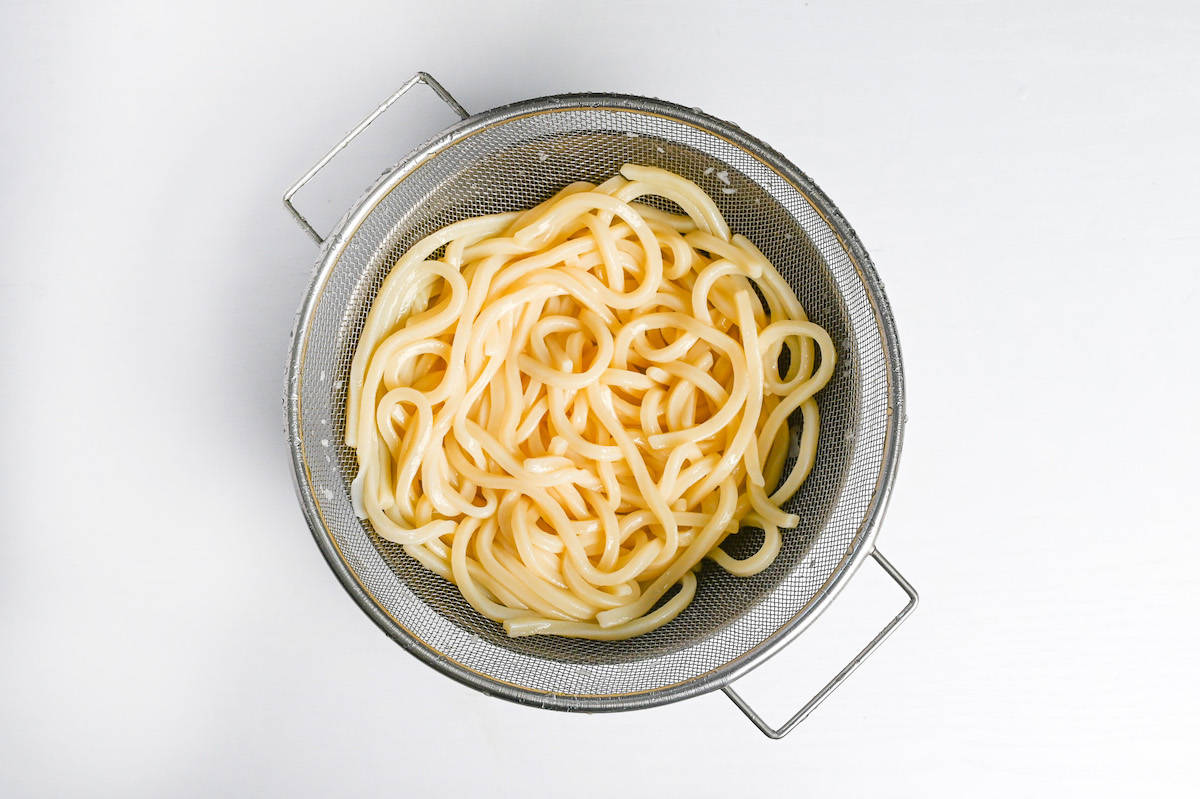
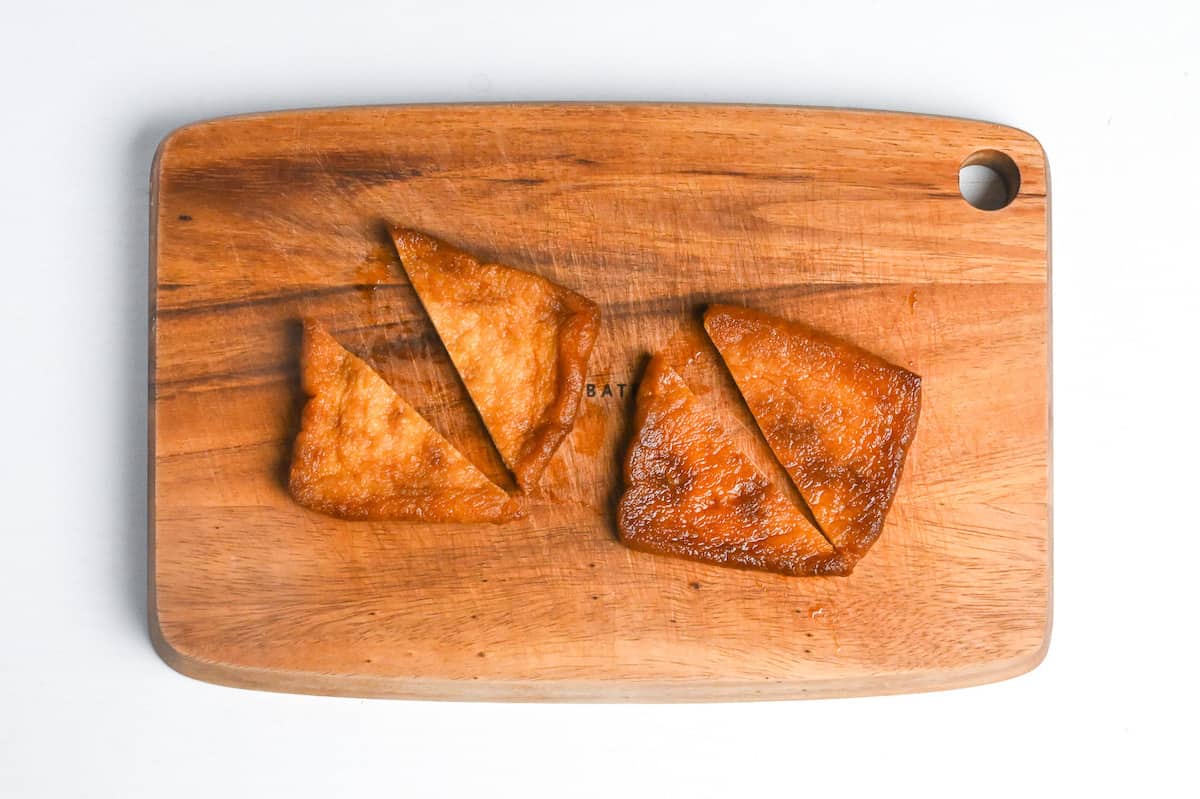
Leave a rating and a comment